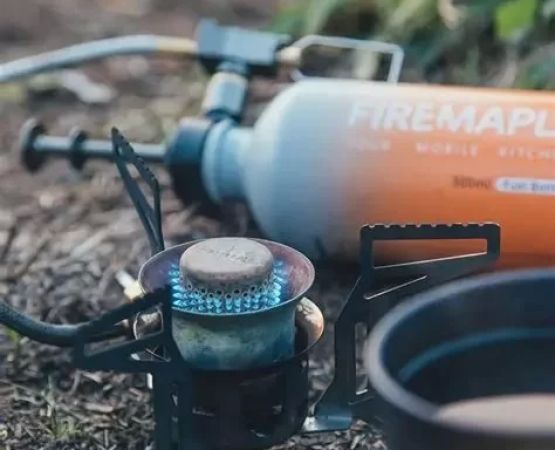- 1 - The Importance of Understanding Animal Behavior
- 2 - Common Signs of Wildlife Aggression
- 3 - How to Avoid Encounters with Aggressive Wildlife
- 4 - What to Do During a Wildlife Encounter
- 5 - The Best Practices for Safe Wildlife Encounters
- 6 - Wildlife Safety While Exploring Nature
- 7 - Why Understanding Animal Behavior is Crucial for Survival
1. The Importance of Understanding Animal Behavior
Understanding animal behavior is crucial for anyone spending time outdoors, especially in areas where wildlife is abundant. Whether you are hiking, camping, or simply enjoying nature, knowing how animals behave can help you avoid dangerous situations and enjoy safe encounters with wildlife. Each species has its own behavioral patterns, and recognizing these patterns can make a huge difference in staying safe and respecting wildlife. Understanding when animals are calm, curious, or agitated can ensure that you react appropriately in various situations.
2. Common Signs of Wildlife Aggression
Wildlife aggression is not always immediately obvious, but there are several signs to watch for. Understanding these signs is vital in preventing dangerous encounters. Here are some common behavioral cues of wildlife aggression:
- Raised Fur or Ruffled Feathers: Many animals raise their fur or feathers to appear larger when threatened.
- Hissing or Growling: These vocalizations are clear signs that an animal feels threatened or is ready to defend itself.
- Direct Eye Contact: Many animals, particularly predators, see eye contact as a challenge or threat.
- Stiff Posture: Animals that are feeling aggressive may stand rigidly and make slow, deliberate movements.
Being aware of these signals allows you to keep your distance and take appropriate action before the situation escalates.
3. How to Avoid Encounters with Aggressive Wildlife
The best way to stay safe when exploring nature is to prevent wildlife encounters altogether. Here are some essential tips to help you avoid coming face to face with aggressive animals:
- Make Noise: Animals often avoid humans if they hear us coming. Make noise while hiking or walking through the woods to alert animals of your presence.
- Travel in Groups: Animals are less likely to approach larger groups of people. If possible, hike with others to reduce the chance of a surprise encounter.
- Keep Food Secure: Many wild animals are attracted to food. Always store food in bear-proof containers or secure areas when camping.
- Stay on Designated Trails: Sticking to trails and paths reduces your chances of wandering into an animal's territory.
4. What to Do During a Wildlife Encounter
Despite your best efforts to avoid animals, sometimes encounters are unavoidable. Knowing how to act during these moments can make all the difference. Here’s what you should do if you find yourself face-to-face with wildlife:
- Stay Calm: Panicking can make the situation worse. Take slow, deep breaths to maintain control.
- Back Away Slowly: Never turn your back on the animal. Instead, back away slowly, maintaining eye contact without staring.
- Do Not Approach: If the animal appears to be curious, avoid the temptation to approach it. Most wild animals prefer to maintain their distance.
- Use Bear Spray or Other Deterrents: If the encounter is with a potentially dangerous animal, such as a bear, having bear spray or other deterrents on hand can be a life-saving tool.
These actions can help defuse the situation and allow you to safely remove yourself from the encounter.
5. The Best Practices for Safe Wildlife Encounters
While it's important to avoid dangerous encounters, it’s also valuable to know how to approach situations with care and respect. Here are some best practices for safe wildlife encounters:
- Observe from a Distance: Always keep a safe distance from animals, even if they seem calm or non-threatening. Use binoculars for a closer look if you want to observe the animal closely.
- Respect Boundaries: If you see an animal near its den or offspring, back away immediately. Many animals can become highly protective in these situations.
- Follow Local Guidelines: Different areas have different rules and regulations when it comes to wildlife encounters. Be sure to familiarize yourself with the guidelines before heading out.
6. Wildlife Safety While Exploring Nature
Safety should always be your top priority when exploring nature, especially in wildlife-rich areas. Some general wildlife safety tips include:
- Stay Informed: Check for any wildlife warnings or reports in the area before heading out. Local parks or ranger stations often provide valuable information on current animal activity.
- Carry the Right Gear: Depending on the area, carrying the right gear—such as bear spray, whistles, or a first aid kit—can make all the difference in staying safe.
- Know the Animal Species in the Area: Research which animals inhabit the region you’re visiting and learn about their behavior, diet, and how to handle an encounter.
7. Why Understanding Animal Behavior is Crucial for Survival
Understanding animal behavior is not just important for avoiding dangerous encounters—it’s crucial for survival. By learning how different animals act in various situations, you can better anticipate their actions and respond in a way that reduces risk. Whether you're hiking through bear country, observing birds in a nature preserve, or camping in areas with wolves or coyotes, understanding how animals perceive threats and react to humans can help you navigate these experiences safely and responsibly.
If you’re planning a wildlife adventure, make sure you’re prepared and well-informed. For the best safety gear, including bear spray and other essentials, visit Pine Cliff Resort to find the tools you need for a safe and enjoyable experience in the wild.







